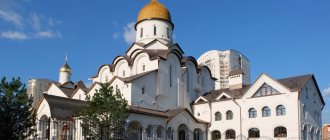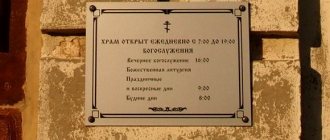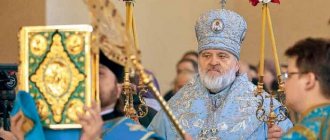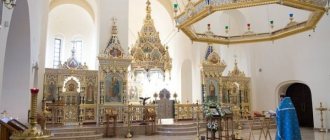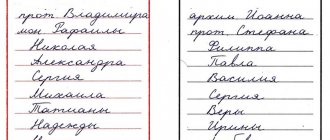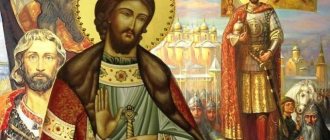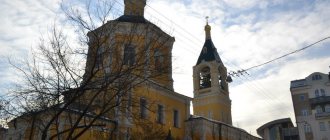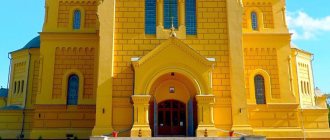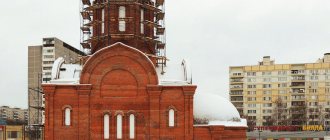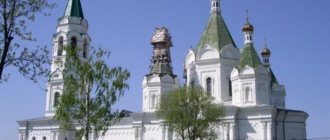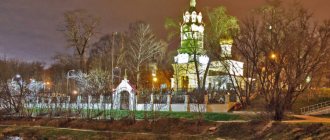Mir
Russia Pskov region Pskov Church of the Blessed Virgin Mary book Alexander Nevsky (Pskov) Map is loading...
{"format":"leaflet","minzoom":false,"maxzoom":false,"limit":50,"offset":0,"link":"all","sort":[""], "order":[],"headers":"show","mainlabel":"","intro":"","outro":"","searchlabel":"\u2026 \u0441\u043b\u0435\ u0434\u0443\u044e\u0449\u0438\u0435 \u0440\u0435\u0437\u0443\u043b\u044c\u0442\u0430\u0442\u044b","default":"","import-annotation":false,"width ":"auto","height":"350px","centre":{"text":"","title":"""link":"""lat":57.80793100000000350746631738729774951934814453125,"lon": 28.321338999999998264911482692696154117584228515625,"icon":""},"title":"","label":"","icon":"","lines":[],"polygons":[],"circles":[ ],"rectangles":[],"copycoords":false,"static":false,"zoom":8,"defzoom":14,"layers":["OpenStreetMap"],"image layers":[] ,"overlays":[],"resizable":false,"fullscreen":true,"scrollwheelzoom":true,"cluster":false,"clustermaxzoom":9,"clusterzoomonclick":true,"clustermaxradius":80, "clusterspiderfy":true,"geojson":"","clicktarget":"","showtitle":true,"hidenamespace":false,"template":"","userparam":"","activeicon": "","pagelabel":false,"ajaxcoordproperty":"","ajaxquery":"","locations":[{"text":"\u003Cb\u003E\u003Ca href=\"/palomnik/%D0% A6%D0%B5%D1%80%D0%BA%D0%BE%D0%B2%D1%8C_%D0%B1%D0%BB%D0%B3%D0%B2._%D0%BA%D0% BD._%D0%90%D0%BB%D0%B5%D0%BA%D1%81%D0%B0%D0%BD%D0%B4%D1%80%D0%B0_%D0%9D%D0% B5%D0%B2%D1%81%D0%BA%D0%BE%D0%B3%D0%BE_(%D0%9F%D1%81%D0%BA%D0%BE%D0%B2)\» title =\»\u0426\u0435\u0440\u043a\u043e\u0432\u044c \u0431\u043b\u0433\u0432. \u043a\u043d. \u0410\u043b\u0435\u043a\u0441\u0430\u043d\u0434\u0440\u0430 \u041d\u0435\u0432\u0441\u043a\u043e\u0433\u043e (\u041f\u0441\ u043a\u043e\u0432)\" \u003E\u0426\u0435\u0440\u043a\u043e\u0432\u044c \u0431\u043b\u0433\u0432. \u043a\u043d. \u0410\u043b\u0435\u043a\u0441\u0430\u043d\u0434\u0440\u0430 \u041d\u0435\u0432\u0441\u043a\u043e\u0433\u043e (\u041f\u0441\ u043a\u043e\u0432)\u003C /a\u003E\u003C/b\u003E\u003Chr /\u003E\u003Ca href=\»/palomnik/%D0%A1%D0%B2%D0%BE%D0%B9%D1%81%D1%82%D0 %B2%D0%BE:%D0%90%D0%BD%D0%BD%D0%BE%D1%82%D0%B0%D1%86%D0%B8%D1%8F\» title=\»\ u0421\u0432\u043e\u0439\u0441\u0442\u0432\u043e:\u0410\u043d\u043d\u043e\u0442\u0430\u0446\u0438\u044f\u003E\u0410\u043d\u 043d\u043e\u0442\u0430 \u0446\u0438\u044f\u003C/a\u003E: »'\u0426\u0435\u0440\u043a\u043e\u0432\u044c \u0441\u0432\u044f\u0442\u043e\u0433\u043e\ u0410\u043b\u0435\ u043a\u0441\u0430\u043d\u0434\u0440\u0430 \u041d\u0435\u0432\u0441\u043a\u043e\u0433\u043e"' \u043f\u043e\u0441\u0442\u0440\ u043e\u0435\u043d\u0430\ u0432 \u043d\u0430\u0447\u0430\u043b\u0435 \u0425\u0425 \u0432\u0435\u043a\u0430 \u043f\u043e \u0442\u0438\u043f\u043e\u0432 \u043e\u043c\u0443 \u043f\u0440\ u043e\u0435\u043a\u0442\u0443 \u0432\u043e\u0438\u043d\u0441\u043a\u043e\u0433\u043e \u0445\u0440\u0430\u043c\u0430","title":"\u0 426\u0435\u0440 \u043a\u043e\u0432\u044c \u0431\u043b\u0433\u0432. \u043a\u043d. \u0410\u043b\u0435\u043a\u0441\u0430\u043d\u0434\u0440\u0430 \u041d\u0435\u0432\u0441\u043a\u043e\u0433\u043e (\u041f\u0441\ u043a\u043e\u0432)", "link":"","lat":57.80793100000000350746631738729774951934814453125,"lon":28.321338999999998264911482692696154117584228515625,"icon":" "}],"imageLayers":[]}
57.807931; 28.321339
Russia, Pskov, historical district Zavelichye, Mirnaya street, 1
Pskov, Pskov region
Russia
Telephone.:
8 (8112) 72-14-41
Church of St. Alexander Nevsky
built at the beginning of the twentieth century according to the standard design of a military temple. Patronal holiday: December 6, the day of remembrance of the blessed Grand Duke Alexander Nevsky.
Current state[[edit]h2>
With the blessing of His Eminence Archbishop of Pskov and Velikoluksky Eusebius, under the leadership of the Rector, Archpriest Oleg Teor, the temple, having suffered from times of hard times, was returned to the Church with great difficulty and repaired. Archpriest Oleg is entrusted with the role of spiritual shepherd to care for the soldiers of the Pskov diocese and the large nuclear submarine "Pskov" in the Northern Fleet. Missionary activities are being carried out to revive Orthodox traditions in the army, instill patriotism and military valor, visit the wounded in hospitals, in “hot spots” - Yugoslavia, Chechnya.
The temple carries out publishing activities. A lot of charitable work is being done to provide material assistance to soldiers.
Military temple in Pskov
Military temple of the blessed Grand Duke Alexander Nevsky The Russian Land acquired the name of Holy Rus'. And the prayer of Russian ascetics never faded here. In the north, Novgorod the Great and Pskov saved Rus' from invaders. We will talk about the Pskov land. This is the land of military glory and Christian asceticism, the land of the famous northern monastery - Pskov-Pecherskaya. Pskov itself is a city-monument of world historical significance, incorporating heroic pages of national history, signifying the power of the Russian people and their creative power. The Military Church of St. Alexander Nevsky in Pskov this year celebrates its 100th anniversary of its foundation. Such a date deserves the closest attention to the temple.
History of the creation of the temple
The military temple of the blessed Grand Duke Alexander Nevsky was built for the 96th Omsk regiment stationed in Pskov. The history of the regiment dates back to 1797, when Lieutenant General M.I. Kutuzov, the future conqueror of Napoleon, formed a chasseur regiment of the most educated and combat officers. The regiment participated with glory in the Patriotic War of 1812, and received the name Omsk in 1863 after its merger with the Koporye Musketeer Regiment, created in 1803 and also covering its banners with glory in the war with the French.
The consolidated Omsk regiment was a selected part of the Russian army. Its soldiers and officers were invited to annual parades at the Winter Palace and performed guard duty in St. Petersburg. The 96th Omsk Infantry Regiment fought for the liberation of Bulgaria from the Ottoman yoke in 1877–1878, during the First World War it participated in combat operations on the Western Front until November 1917, then was disbanded.
The local city council petitioned the headquarters of the St. Petersburg Military District for the 96th Omsk Infantry Regiment to be stationed in Pskov. The petition was granted, and the construction of a military camp began in 1894 on the Pskov Zavelichye with the construction of barracks for soldiers and outbuildings with service premises for officers. The question of the temple immediately arose. Located near the barracks, the Church of St. Clement of the 16th century could accommodate barely a hundred people, while the regiment had about two thousand servicemen. By February 1898, the regimental canteen was converted into a house church.
Minister of War Alexei Nikolaevich Kuropatkin considered the main thing in state policy to be support in society for the Orthodox faith. At the time when he headed the military department, a special Commission was established under the Military Council of the ministry to address the religious needs of the troops. The decision to do this was made at the beginning of 1900. On the memorandum of the Minister of War, Nicholas II wrote in his own hand: “God grant that the religious needs of the troops will soon be satisfied, which I consider a highly important matter.” With the creation of such a body, the work of church building received a powerful charge. The commission recommended, and Nicholas II approved, that all garrisons should have separate, preferably stone, churches.
The construction of a separate temple for the Omsk regiment became possible thanks to the efforts of the commander-in-chief of the troops of the guard and the St. Petersburg military district, Grand Duke Vladimir Alexandrovich. His letters to the Chairman of the Commission for Satisfying the Religious Needs of the Troops, a representative of a famous noble family, General of the Infantry, Count I.D., have been preserved. Tatishchev and to the Minister of War A.N. Kuropatkin. In the documents of the commission, a memorandum from Count Tatishchev, submitted to Nicholas II, about church construction for the troops survived. The note was returned from the Tsar to the journal of “Highest Commands” at the General Staff, and in it was written in pencil in the column about the 96th Omsk Infantry Regiment: “Build a church in 1905.” - and the resolution of the Minister of War was imposed: “It is ordered by the Highest to carry out the execution as requested.”
In 1905, the treasury allocated 44 thousand rubles for the construction of the temple, but the Pskov economic and construction committee for the construction of the church in the Omsk regiment began practical work only a year later. The temple was built according to the model design of the regimental church, which was drawn up in 1901 by civil engineer, court adviser F.M. Verzhbitsky. The standard church he created continued the trend in church construction begun in the first half of the 19th century by the architect K.A. Ton, author of the project for the Cathedral of Christ the Savior in Moscow. During the construction of churches according to the project of F.M. Verzhbitsky performers were given greater freedom of action. Deviations in order to improve the external appearance of the temple were apparently introduced by Colonel, military engineer D.K. Kostomarov with the participation of the performers themselves - Pskov stone craftsmen, who have long been famous for their skills.
The laying of the regimental church took place on June 11, 1907, and on October 1, 1908, the Pskov Voice newspaper reported the following event: “The 96th Omsk Infantry Regiment announces that on the 4th day of October this year, Saturday, His Eminence Arseny, Bishop Pskov and Porkhovsky, the newly built regimental church of the 96th Omsk Infantry Regiment will be consecrated in the name of the Holy Blessed Prince Alexander Nevsky. Everyone wishing to attend the celebration is informed that the day before the all-night vigil will begin at 6 o’clock in the evening, and on the day of consecration the church service will begin at 8 o’clock in the morning.”
The military temple in the name of the blessed Grand Duke Alexander Nevsky of the 96th Omsk Regiment was built in 14 months and consecrated on October 4, 1908 by Bishop Arseny of Pskov and Porkhov (Stadnitsky; later Metropolitan; † 1936).
It is significant that the temple was given the name of the defender of the borders of Russia and the patron saint of soldiers, the commander of Holy Rus', Alexander Nevsky, whose glorious victories are inscribed as important milestones in the history of the Fatherland. Pskovites, as you know, had special reasons for honoring and glorifying Alexander Nevsky. When the German knights took Izborsk and approached Pskov, another threat from the west loomed over Novgorod, and the Novgorodians turned for help to Prince Yaroslav (Theodore) Vsevolodovich, who sent an armed detachment led by his son Andrei Yaroslavich, the younger brother of the future holy Prince Alexander. However, the Novgorodians did not have much faith in the strength of the young prince. They again sent Archbishop Spiridon with the boyars to Yaroslav, begging him to release Alexander to the principality. Yaroslav agreed. In the winter of 1241, Alexander, already famous for his victory over the Swedes on the Neva, again entered Novgorod after a year of absence.
The decisive battle with the German knights, known as the Battle of the Ice, took place on April 5, 1242 on the ice of Lake Peipsi. After this victory, the Livonian Order ceased to exist, and the Catholic Church was forced to renounce its claims to the Russian lands for a long time. Not only Russian cities, but the Orthodox faith itself and the identity of Holy Rus' were saved.
A note from the newspaper “Pskov Alarm” for April 22, 1924 vividly depicts the fate of the temple after the revolution. The subtitle says it all at once: “There was a church - now a club.” Then they destroyed the bell tower and the head of the temple. For a long time, the surrounding residents could not get used to the fact that the former church housed a “revolutionary Red Army theater.” Approaching the building, out of habit, they took off their hats, crossed themselves and whispered: “Save, Lord, and have mercy!”[1[1]/p>
Since 1947, the temple housed the House of Officers, then a warehouse.
Now the temple has been returned to the Church. It was restored as soon as possible. The project for its restoration was developed by Moscow architects (A.I. Khamtsov, N.S. Vasilenko, etc.), and was implemented by Pskov restorers, returning the temple to its former appearance. Since March 1992, daily worship services have resumed there, which had previously been held in the open air for more than two years. A sign of the revival of the temple was the gift of His Holiness Patriarch Alexy II († December 5, 2008) - the monumental work of Palekh artists “The Life of Alexander Nevsky”, awarded the State Prize of Russia.
This temple is lucky. Not only has it been restored, but so has its history. The small book “God is not in power, but in truth” with the subtitle “The History of the Church of the Holy Blessed Prince Alexander Nevsky” [2 [2] published with the blessing of Archbishop (now Metropolitan) of Pskov and Velikoluksky Eusebius has already gone through four editions.
Today, the Alexander Nevsky Temple is included in the protected area of Pskov. It became the military temple of the 76th Airborne Division, and its rector, Archpriest Oleg Teor, is responsible in the Pskov diocese for the care of soldiers in the region. The temple was awarded a diploma from the Ministry of Defense and included in the book “Golden Chronicle of Glorious Deeds for the 1100th Anniversary of Pskov.” All significant events in the life of the temple take place with the direct participation of Metropolitan of Pskov and Velikoluksky Eusebius. The Russian army is the cornerstone of the country’s security, and the archpastor does not leave it under his care.
Ministry of Shepherd
The activities of the temple are so extensive, multifaceted and fruitful that it is difficult to believe that the rector of the military temple, Archpriest Oleg Teor, lives in the same time as the rest of us. It seems that the time frame is expanding for him. Only with God's help can one carry out the service that the Pskov church carries out. It is impossible to describe all this work in one article; one can only rather schematically note the main milestones of his activities.
Archpriest Oleg Teor, rector of the Alexander Nevsky Temple in Pskov, with paratroopers. The Church of St. Alexander Nevsky publishes a newsletter. It is called “The relationship between the army and the Church using the example of the Pskov military temple of St. Alexander Nevsky.” The leitmotif of all its numbers are the gospel words: “Greater love has no one than this, that someone lay down his life for his friends” (John 15:13). Brilliant white paper, strict cover, size A-4. Military-like clear black and white photographs, the same clear font (unlike some book editions), lively, meaningful text. It is characteristic that any event here is not simply commented on or described: it is accompanied by an intelligent historical excursion. The entries are arranged in chronological order. Each newsletter covers the events of one half of the year. Moreover, the framework of the event seems to be expanding - behind the daily activities of one church, the intense and active life of many Orthodox parishes, built into the outline of the difficult existence of modern Russia, takes shape. The magazine is designed strictly, with taste and love. You want to hold it in your hands and leaf through it, because here your heart rests and you learn that there is still a root, deep Russia with its army, feat, glory and eternal memory. And this Russia is under the shadow of the Church. And this is the real, simple and unforgettable thing that we can still live with, that preserves the tradition and connection of generations. And the television picture of our insignificance today dissolves in this powerful creation of the Russian world. This is a chronicle of service to God and the Motherland on the Pskov land of the warrior temple (so to speak), its rector, Archpriest Oleg Teor, his ministers and parishioners.
Archpriest Oleg is entrusted with the role of spiritual shepherd in caring for the soldiers of the Pskov diocese and the large nuclear submarine "Pskov" in the Northern Fleet. At the same time, the main direction of the temple’s work is its missionary activities to revive Orthodox traditions in the army, instilling patriotism and military valor. And not only this. I will give the full text of a very heartfelt announcement: “Dear warriors! Every Monday from 18-00 to 19-00 the priests of the military church of St. will be in the artillery regiment club. Alexander Nevsky: rector Archpriest Oleg Teor or, in his absence, Father Vasily Andreev, Father Alexander Ermolaev, Father Alexander Melnikov. If you have any worries, are tormented by grievances and misunderstandings, you can come up and talk with the priest in private.
The temple has a library, a museum, and Orthodox schools for children and adults. Publishing activity is the most important area of the temple’s work. Much is being done to preserve the memory of those who did not return. And here, in the temple, they keep a living memory. With God everyone is alive.
Archpriest Oleg Teor does a lot to perpetuate the memory of the soldiers of the Pskov garrison. The publishing department of the temple, using computer graphics, recreated portraits of the heroes of the Pskov Airborne Division, the legendary 6th company, as well as paratroopers from all over Russia since 1994 who died in Chechnya. A collection of poems and books have been published in memory of them. An archive is being formed in the temple - documents, photographs of soldiers and officers. They are brought not only by relatives and friends of the victims, but also a targeted search is carried out. Synodik published. Every day the names of killed soldiers and all Pskov paratroopers currently serving in the Chechen Republic are remembered. Every Thursday a prayer service is held in the church for peace in Serbia and Chechnya. Since 2007, temple employees have been holding “Days of Memory and Sorrow” every year from mid-February to mid-March, then they organize an exhibition of books and photographs, personal belongings of the dead, and conduct excursions for children, schoolchildren, students, cadets and all those who honor the memory of the fallen .
Every year on September 11, the day of the beheading of John the Baptist, the Russian Church commemorates Orthodox soldiers who were killed on the battlefield for their faith and Fatherland. On this day, Father Oleg visits military graves, serves litiyas, and meets with veterans and soldiers.
On the land of Pskov, the memory of the tragic events of the abdication of Tsar Nicholas II from the throne and the appearance of the “Sovereign” icon of the Mother of God in the village of Kolomenskoye is prayerfully preserved. Every year on this day, a religious procession takes place from the military temple of Alexander Nevsky to the chapel in honor of the “Sovereign” icon of the Mother of God. The chapel was built in 1996 and is dedicated to the memory of soldiers who died in the second half of the twentieth century. In the Alexander Nevsky Church itself, on March 1, 2001, on the anniversary of the death of the 6th company of the Pskov garrison, memorial plaques with the names of the fallen were installed. There, in memory of all the warriors of all times who died for the Fatherland, an unquenchable lamp burns on the funeral table.
For Easter, the church's publishing department always prints congratulations to the relatives of the fallen soldiers, which bear two signatures: the commander of the Pskov airborne division and the rector of the church of St. Alexander Nevsky. These are words of love and complicity: “Remember that the Russian Orthodox Church is with you, with your families, relatives and friends. She prays and will pray for a person dear to you, who died for the Fatherland, for you, hoping for God’s help...”
The temple not only organizes pilgrimage trips, but such trips include visiting places of military glory and past battles. On the territory of the Pskov region, in every district there are many graves of soldiers who died during the Great Patriotic War. Father Oleg regularly visits these mass graves. Together with the temple singers, pilgrims and local residents, they offer prayers for the repose of the defenders of the Motherland. Every year on December 7, a memorial service is held in the church for those killed during the earthquake in Armenia. Every year on this day, not only representatives of the Armenian community, but also other Pskovites come to the temple. In 1988, Pskov military paratroopers also flew to Armenia to help clear the rubble.
The oldest unit of the Airborne Forces, the 76th Guards Airborne Chernigov Red Banner Division, was formed in 1939 in the Novorossiysk region. She fought through the Patriotic War, received the title of “Guards” at Stalingrad, and for the liberation of Chernigov she was awarded the honorary title of Chernigovskaya. In 1946, the division was converted from a rifle division to an airborne division. Its soldiers took part in hostilities in Afghanistan, Abkhazia, Transnistria, Kosovo, and Chechnya. On December 1, 2006, the 76th Pskov Airborne Division began to be called, according to the order of the Minister of Defense, the airborne military assault division. Archpriest Oleg Teor often accompanies soldiers on combat missions. Father also knows those tragic days when young children, many of whom did not even have time to start a family, return in zinc coffins. He performs funeral services for the dead, reassures his relatives as best he can, and prays, prays, prays...
With the blessing of Metropolitan Eusebius of Pskov and Velikoluksky, Father Oleg also takes care of the naval units (border guards and aviation) stationed in the Pskov region. At the same time, the temple carries out a lot of charitable work to provide material assistance to the military.
And one more thing: for a number of years now, Archpriest Oleg and his assistants have been collecting the “Holy Hill” stone by stone. For now, his place has been determined near the temple, on the hill - a cross. Here lie stones that were lifted by divers from the bottom of the Izhora River, from the place where Alexander Nevsky won his first victory. There are also earth and stones from Alapaevsk, from Ganina Yama, brought by one monk from Yekaterinburg, from the Levashevskaya hermitage near St. Petersburg, from the Butovo training ground near Moscow. There are also stones from destroyed temples here. Stones and earth are brought here from their native places and from the places where soldiers of the Pskov garrison died. They also put stones under the formwork from the places where some miracle was performed. The hill near the temple became a keeper of memory.
Archpriest Oleg is a supporter of broad ties between Orthodox dioceses. The temple's guides regularly conduct excursions for guests, including foreign ones, to the holy places of the Pskov land, the Pskov-Pechersky Monastery, and the Pushkin Museum-Reserve. For a number of years, pilgrimage groups from Serbia have been coming to Pskov land and to the military temple. They visit the homeland of Saint Olga, the Pskov Kremlin and other shrines. If there are Serbian priests in the group, then together with the rector of the temple, they perform the Divine Liturgy. In the tragic year 1999 for the Slavic world, NATO planes bombed the territory of the sovereign Federal Republic of Yugoslavia from March 24 to June 9. Already in July, the priest, together with the Pskov paratroopers, was in Pristina and saw with his own eyes the suffering of the Orthodox Serbs. Since that time, a prayer service for peace in Serbia, compiled by Archpriest Oleg Teor, has been served in the church every week: “For the suffering Serbian Orthodox people, the salvation and preservation of their shrines and the lives of our brethren in the region of Kosovo and in all parts of their Fatherland...”.
With the blessing of the Pskov bishop and on the advice of Elder Nikolai Guryanov from Zalit Island, the rector of the military temple, together with parishioners and soldiers of the Pskov garrison, annually in September make a religious procession around Pskov to protect the city.
Leaf from the Synodic. Paratroopers of the 6th company. There is another important direction in the missionary activities of the temple. We are talking about the Alexander Nevsky conversations, which have been held for more than ten years for everyone, and this is mainly the Pskov intelligentsia. In addition, Alexander Nevsky readings are periodically held in the library for children and youth. At the request of the officer-educators, the temple employees began to conduct cycles of conversations as part of readings about the great commanders of Russia in the division's units.
Archpriest Oleg Teor regularly takes part in gatherings of military clergy. This is a kind of platform for exchanging experiences and discussing ways to implement the resolution of the Holy Synod of the Russian Orthodox Church of April 11, 2006 on the need to restore the institution of military clergy in the Russian army.
Father Oleg often visits military units located in the Pskov region. In many military formations, the priest blessed weapons, military equipment, aircraft and barracks. Periodically, he goes to training grounds, where conversations are held with military personnel about the fundamentals of Orthodoxy, and spiritual literature is distributed. It has become a tradition to serve a prayer for the successful conduct of these events before the start of large-scale exercises. For example, Father Oleg, sometimes together with other priests, prays at the landing site for the successful landing of all participants in military exercises.
The rector of a military church is always invited to ceremonial events in military units, to see off Pskov conscripts, the priest also goes to secondary schools, to cadets of the Pskov Law Institute, to veterans of the Great Patriotic War - and everywhere he carries the word about Christ. And, in turn, pilgrims from boarding schools, schools, and military units from different parts of Russia come to his temple.
On the eve of the Holy Resurrection of Christ, Father Oleg visits the garrison hospital and the hospital for veterans of the Great Patriotic War with gifts, Easter eggs and books. And on the day of the Transfiguration of the Lord, he tours military hospitals and medical units with blessed apples. He had to visit the wounded in hospitals and in so-called “hot spots”.
On Easter, students of the Sunday school at the church stage an Easter performance for paratroopers in the hall of the garrison House of Officers of the military camp of the Pskov Airborne Division. Children, veterans, military personnel and ordinary residents come to the holiday.
Several times a year, in the military temple, days associated with the life and work of the defender of the Fatherland and the Orthodox faith of the blessed Prince Alexander Nevsky are solemnly celebrated: June 12 - the birthday of the Grand Duke, April 18 - victory over Lake Peipsi, September 12 - the transfer of the holy relics of the prince from Vladimir to St. Petersburg, December 6 - the day of remembrance of the saint. His two feats - the feat of warfare in the West and the feat of humility in the East - had one goal: the preservation of Orthodoxy as a creative and moral force of the Russian people.
It has already become a tradition that on these holidays the celebration of the Divine Liturgy is led by Metropolitan Eusebius. Bishop's services are amazing in their solemnity and beauty: the liturgy is performed in a single prayerful presence of the archpastor, clergy, choristers, soldiers of the Guards Airborne Division and other parishioners.
An unquenchable lamp burns in front of the revered temple icon of the blessed Prince Alexander (late 19th century). The fire for it was brought from the homeland of the Grand Duke - from Pereslavl-Zalessky.
Shrines and relics[[edit]h2>
At the Church of St. Alexander Nevsky there is a church museum. He owes his birth to Archpriest Oleg Teor. He collected and preserved many shrines and museum values associated with the rich history of the ancient Pskov land.
The museum houses the Old Testament with notes from Emperor Nicholas II.
The shrine of the museum is the cassock of the righteous John of Kronstadt; in one of the books there is the original of his signature, the Mother of God from the St. Petersburg St. John's Monastery on Karpovka. The museum has the epitrachelion and cassock of Archpriest Nikolai Guryanov, to whom people traveled not only from all over Russia, but also from many corners of the globe. The museum exhibits include:
- diary of schema-men Luke, a resident of old Valaam and one of the founders of the New Valaam Orthodox monastery in Finland, who later rested in the Pskov-Pechersk monastery;
- homemade utensils, which were used by persecuted clergy to perform the Divine Liturgy, sometimes in camps and exile.
The museum contains old icons, crosses, handwritten and printed church books that require restoration; collections of Easter eggs, samovars, coins, broken bells.
You can see rare icons:
- the miraculous Image of our Lord Jesus Christ on a copper plate;
- Icon of the Most Holy Theotokos “From the Troubles of Those Suffering.”
The museum's exposition includes the Kazan Icon of the Mother of God, in front of which Pskov partisans prayed during the Great Patriotic War. Donated to the museum were icons painted by 9-year-old Bulgarian icon painter Georgiy “St. Olga” and an icon from Finland “St. healer Panteleimon,” icon from Georgia.
Pskov needlewomen donated homespun embroidered towels, tablecloths, valances, icons, and lace to the museum.
The tragic events associated with the war in Afghanistan and Chechnya are also reflected in the museum’s exhibition: these are the belongings of fallen soldiers and officers.
A little history
The church was built and consecrated in 1918, and it was erected in just 14 months - surprisingly quickly for that time.
Like most shrines, the Alexander Nevsky Church suffered at the hands of revolutionaries - in 1918 the bell tower was demolished, the golden crosses were removed and the building was converted into a “Red Army Theater”, and later a garrison House of Officers.
The temple returned to religious activity only in 1992; it was restored and given to the care of Archpriest Oleg, one of the priests of the Pskov diocese.
Modernity
The rector of the Church of the Holy Blessed Prince Alexander Nevsky, Father Oleg, and his assistants have been carrying out divine and social service for many years not only in their parish. Father spiritually surrounds all the soldiers stationed on Pskov land.
Schedule of services
The doors of the Church of St. Alexander Nevsky, located in Pskov, are open to parishioners from 6 am to 8 pm. Divine services are held there daily at 8.30 and 18.00.
Activities of the parish
The clergy of the Prince Alexander Church carry out various types of social work:
- children's Sunday school classes;
- conversations within the framework of the temperance society organized at the cathedral;
- material and moral support for the families of fallen servicemen;
- spiritual, moral and patriotic education of the younger generation, within the framework of which annual Alexander Nevsky readings are held, and a church museum operates.
